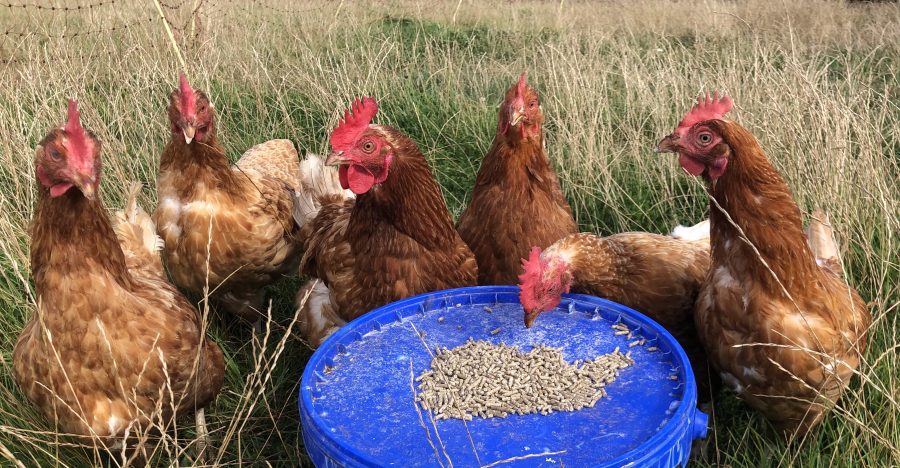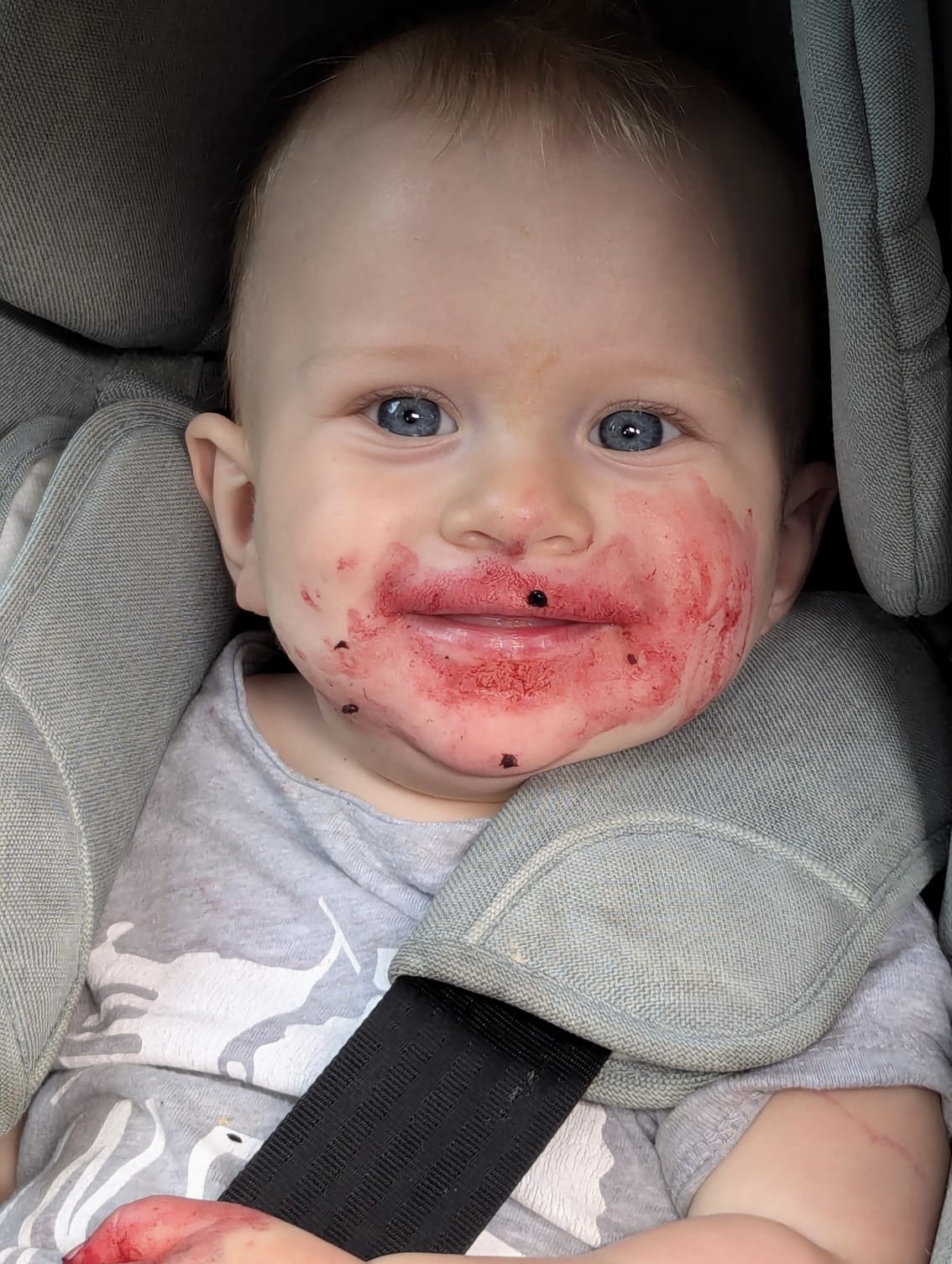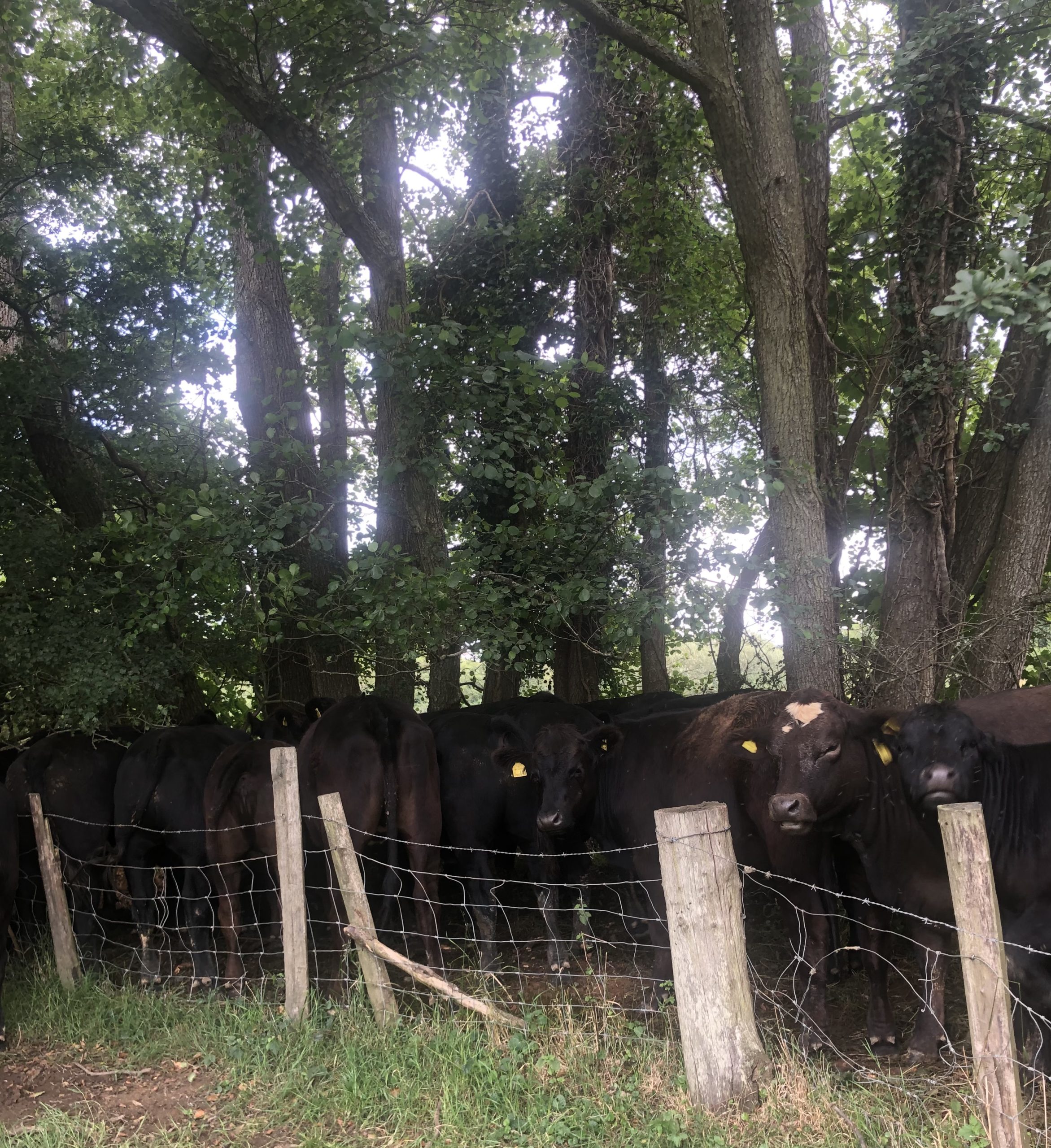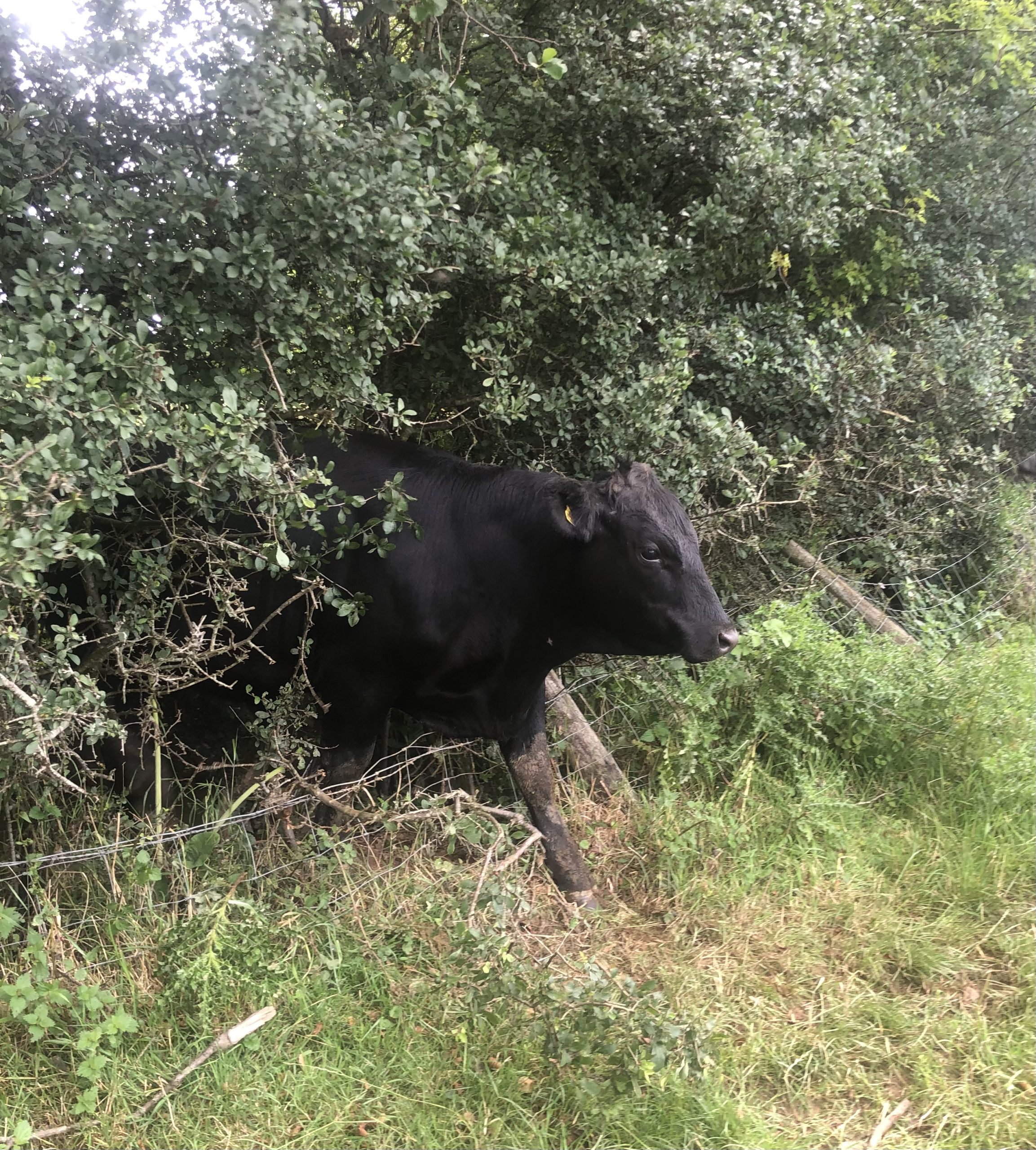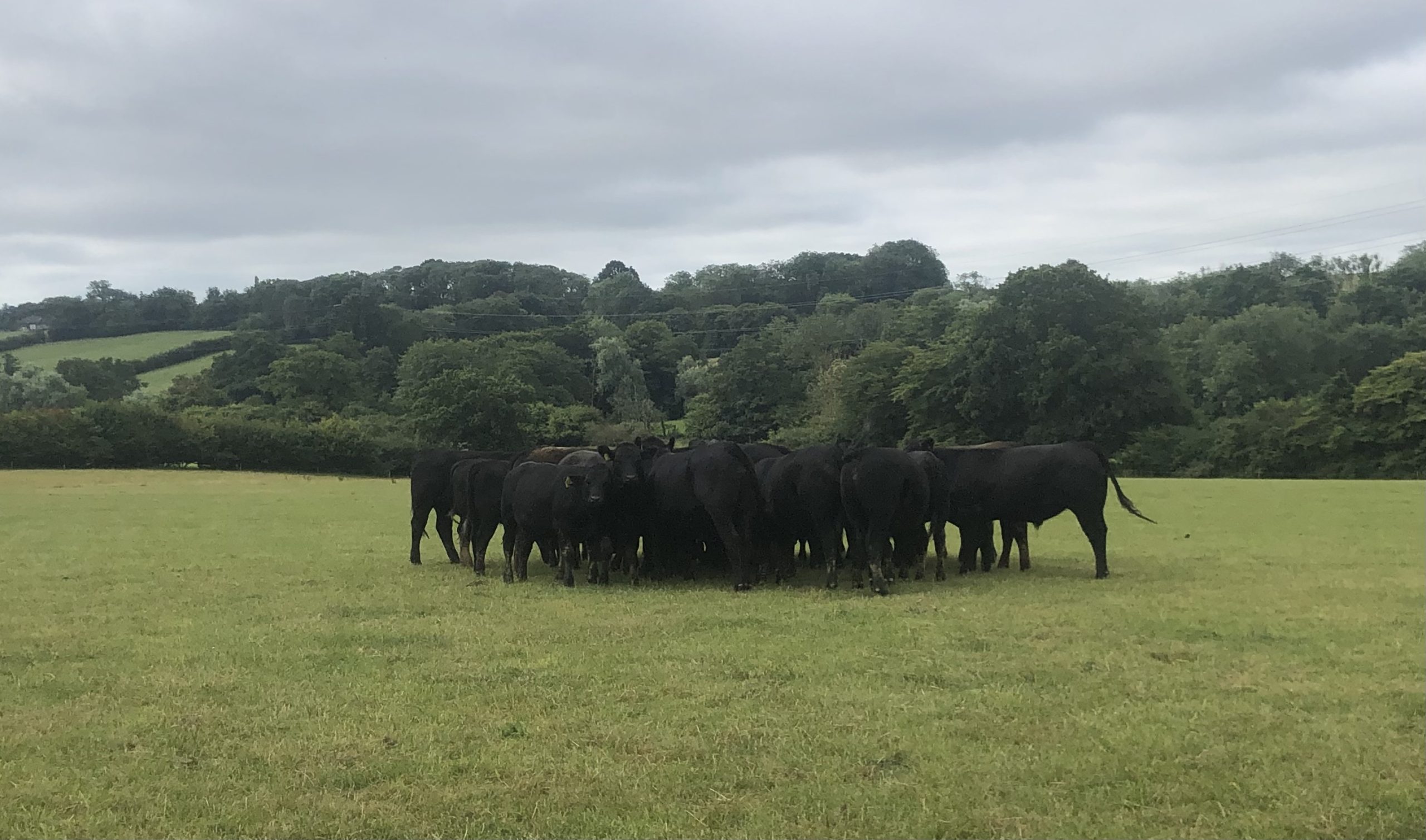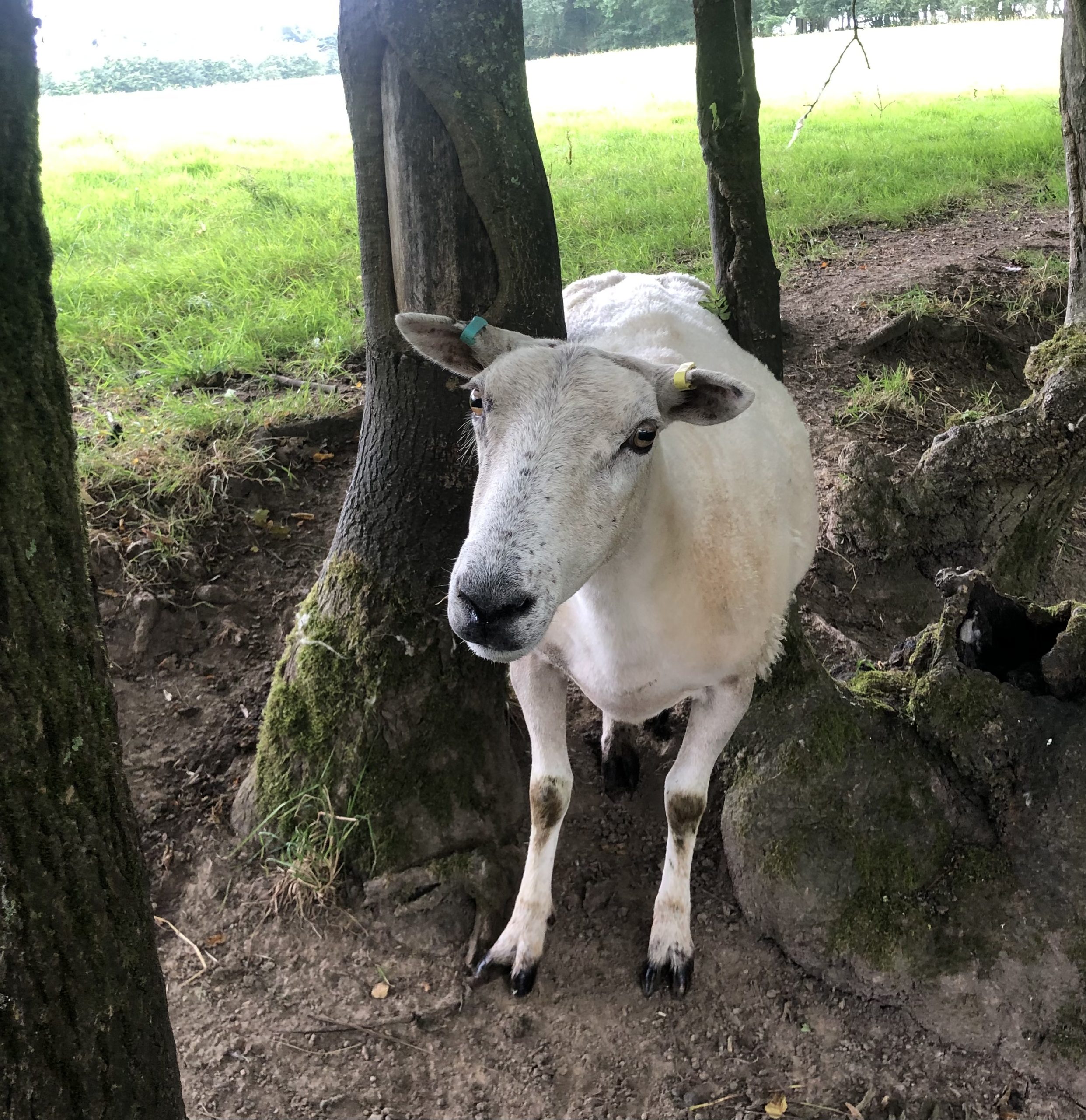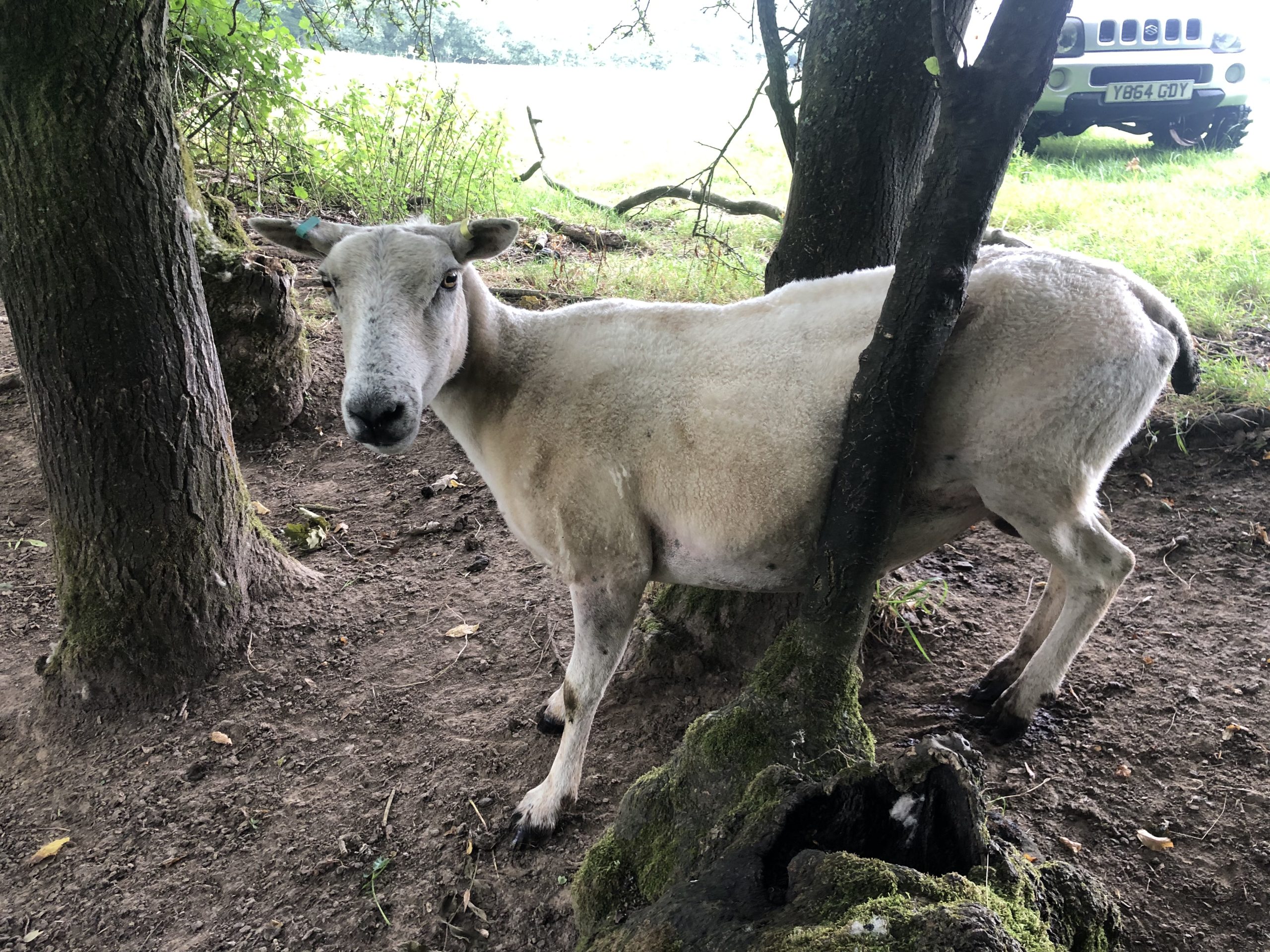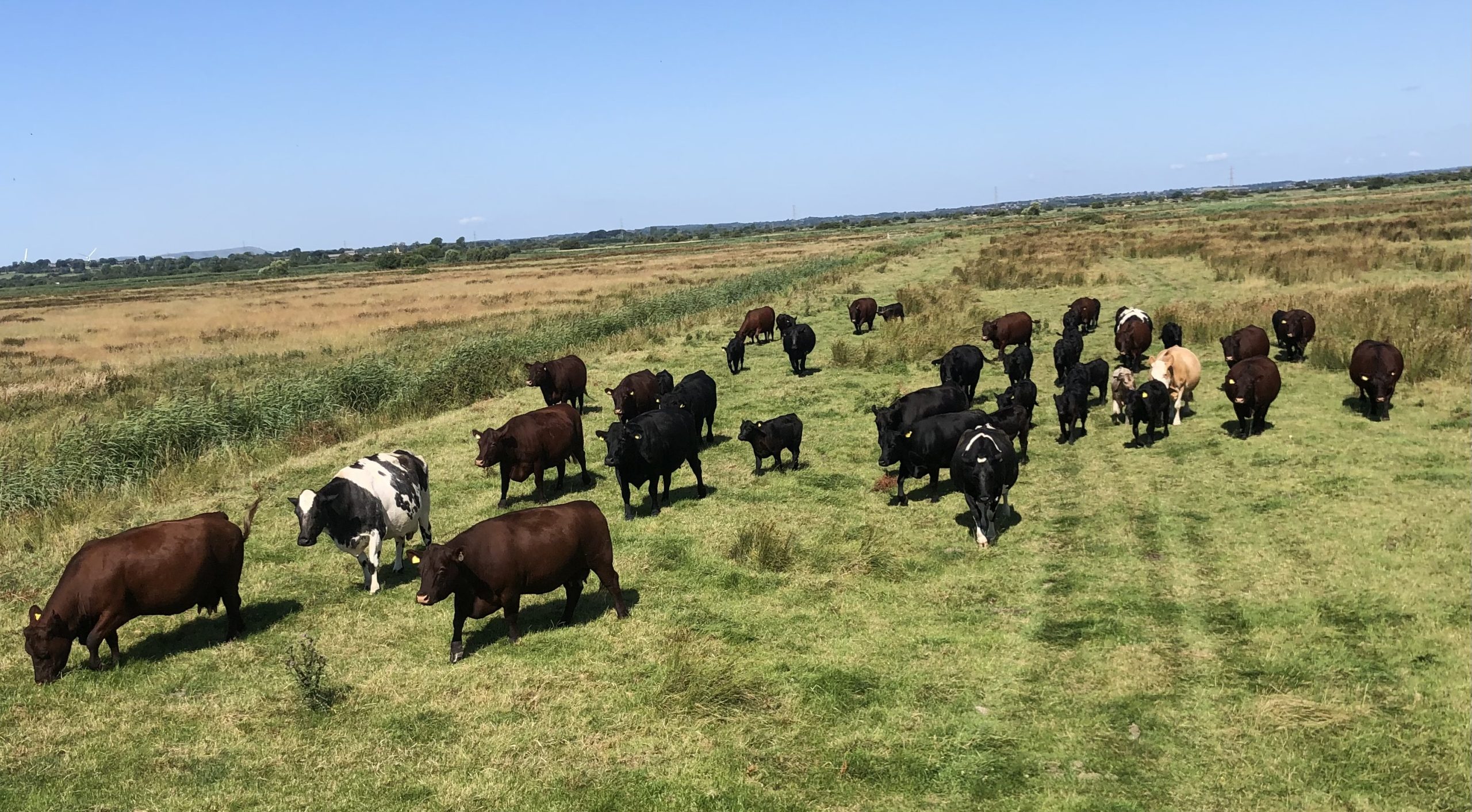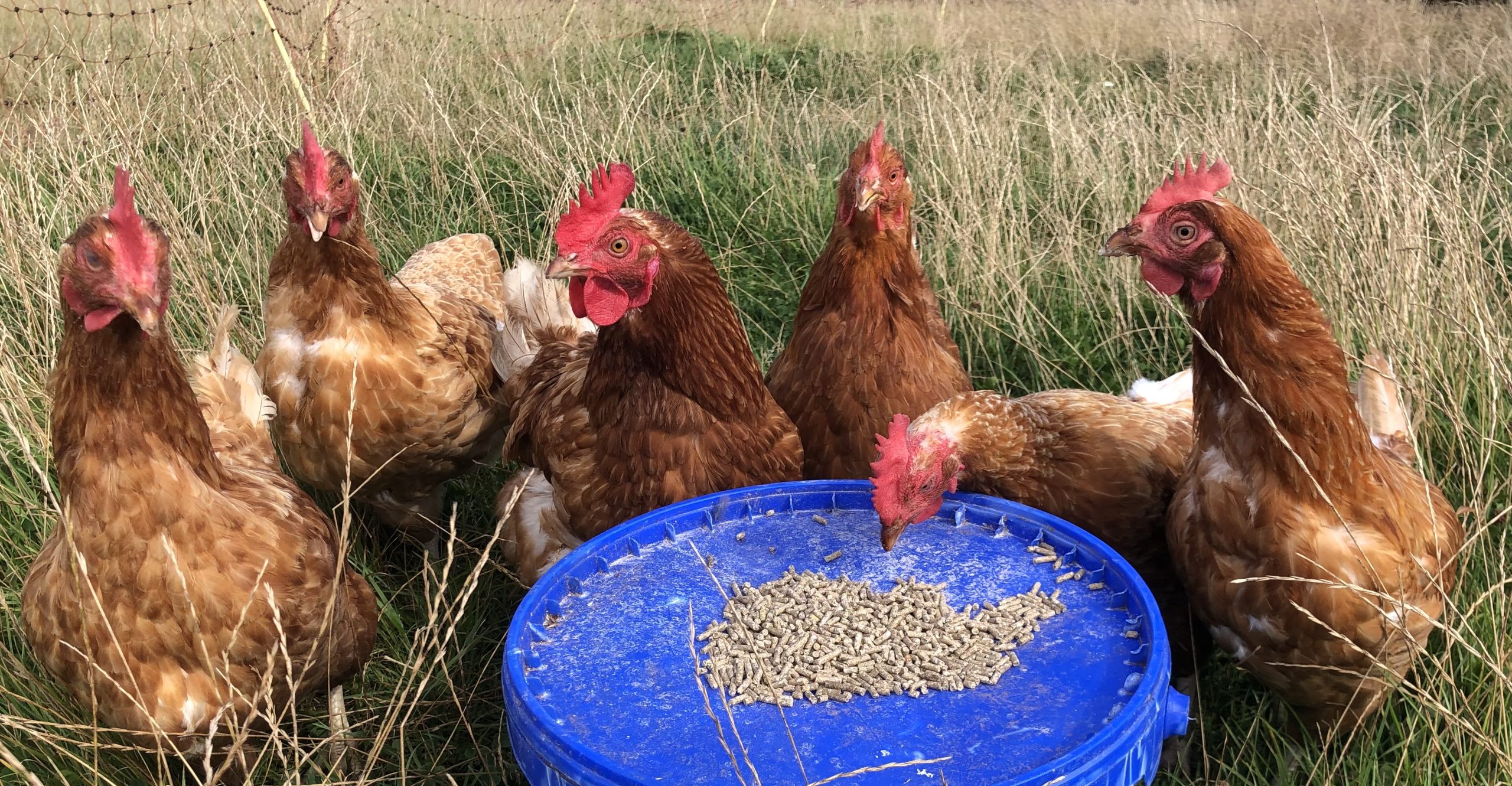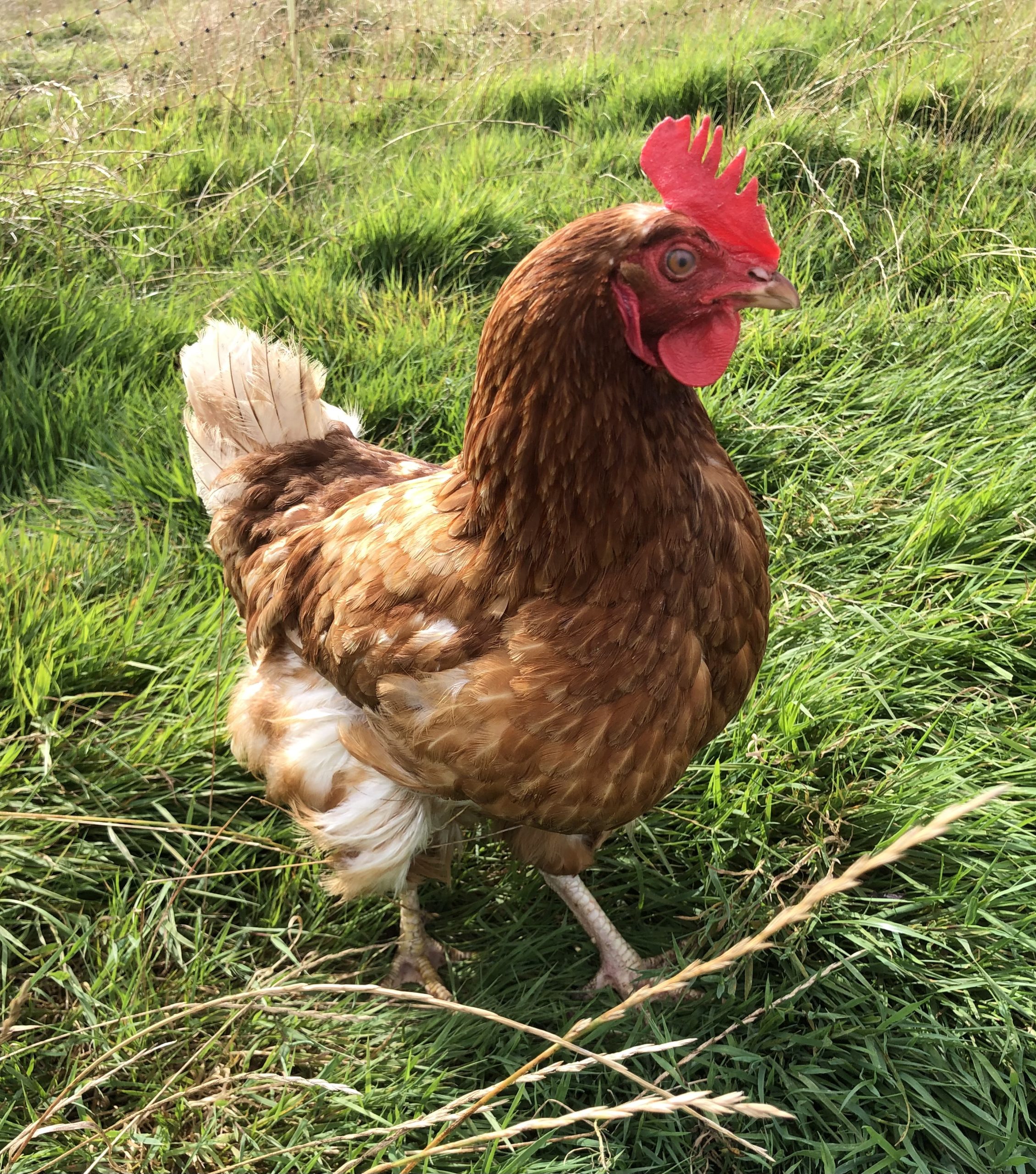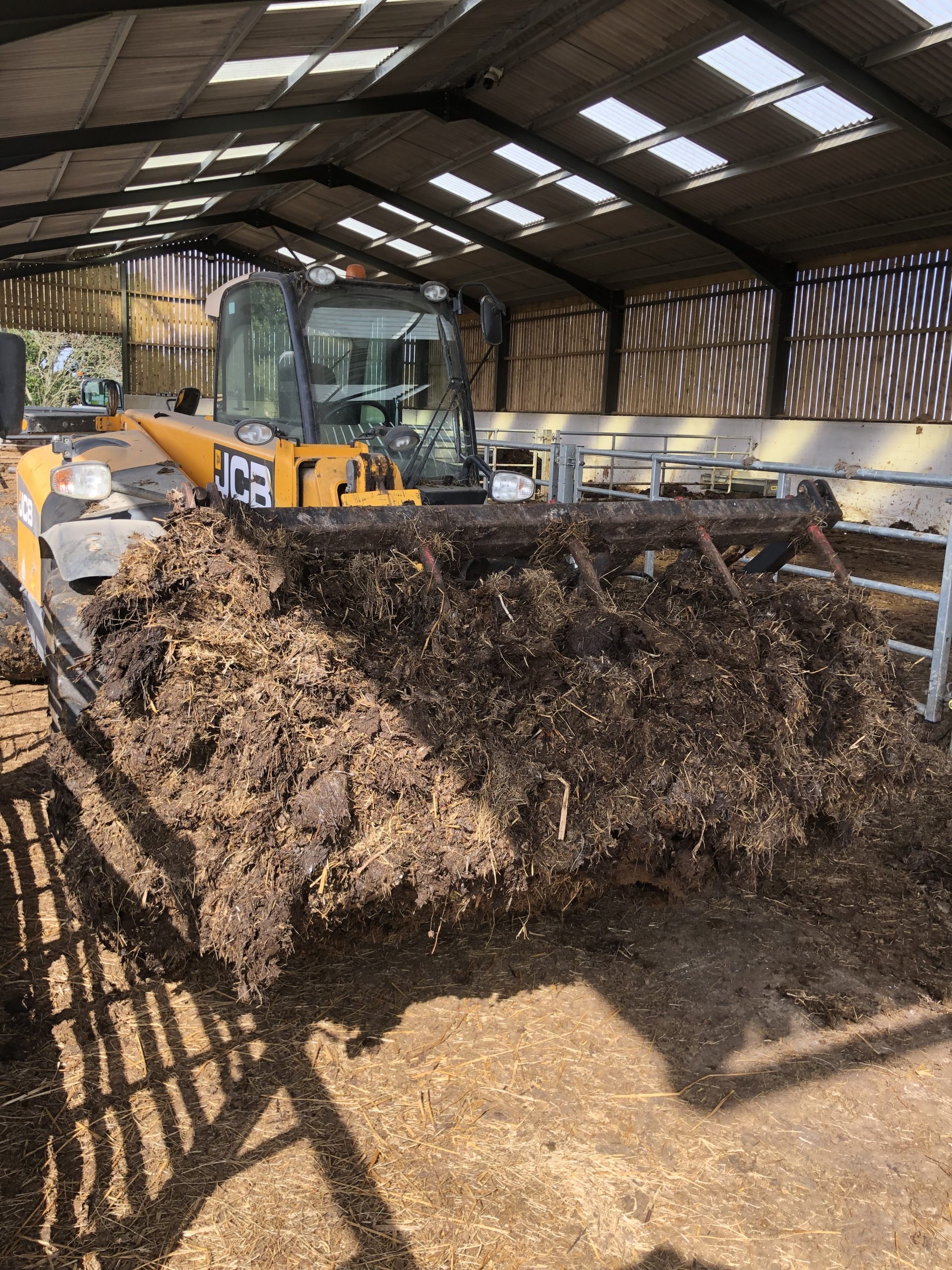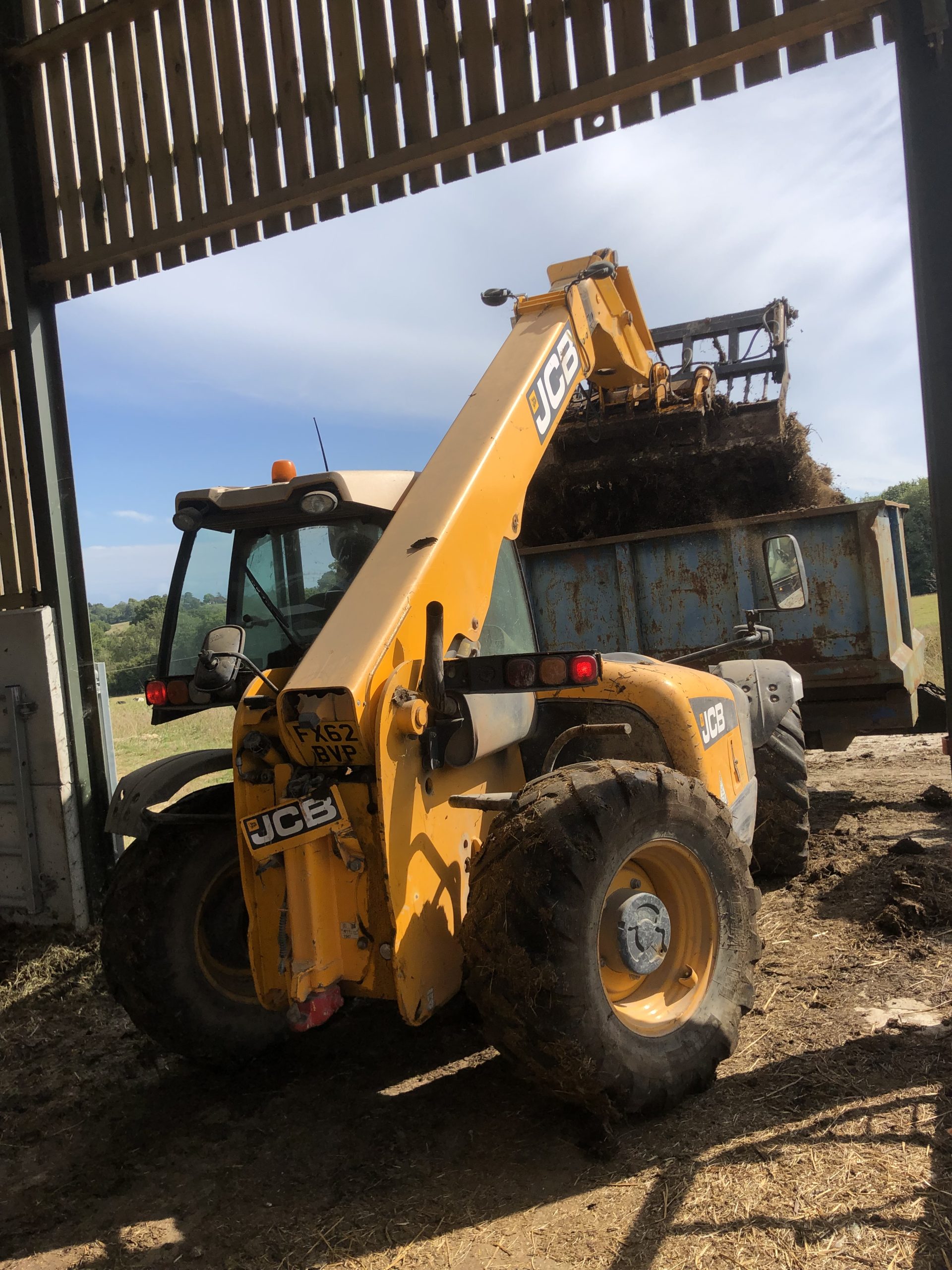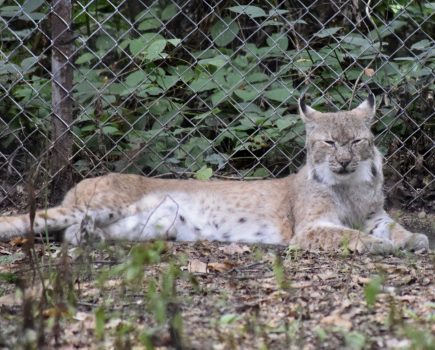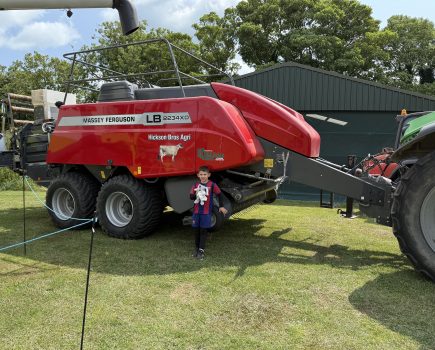Our two chickens, “the survivors”, have been free ranging since losing their colleagues. These birds are so inquisitive that they always turn up when you don’t want them. I was both horrified and amused when they took it upon themselves to be ‘front of house’ on farm gate sale day, dodging cars, greeting customers and escorting them towards the cheese, meat and salad counters. These chickens have earned the names of Good Hen and Bad Hen, dutifully laying daily in separate nesting sites, noisily announcing to the farmyard when their task is done, but whereas Good Hen leaves her egg intact, Bad Hen eats hers unless it is quickly collected.
Two eggs a day isn’t enough to keep our family supplied, so we boosted hen numbers up to eight. Shortly after the newcomers’ arrival, Bad Hen and one replacement became fox fodder. All hens are now restricted to exploring behind an electrified fence, at least until we get short of a unit for other stock. I miss their farmyard antics, although it’s less stressful. Good Hen might have to change her name to Bossy Hen, as she is happily deployed in letting the new chickens know the full meaning of ‘pecking order’.
I’ve just been online and registered as a keeper of poultry. With only six hens this has not previously been necessary, but from
1 September 2024, keepers of less than 50 birds are required to register them.
It was a pleasantly straightforward form to fill in, requiring contact details, location, species, numbers and why you keep them. I understand there will be a mandatory yearly update required and I will henceforth be supplied with crucial information and guidance about bird care.
Harvesting is going on all around us. The wet winter took its toll on autumn-sown crop yields, but hopefully the spring corn will fare better. Our grandchildren are keen to check out the action. There’s a strong demand for straw, and its price reflects this. Consequently, bedding up stock yards with straw is an expensive business. To reduce costs we use rushes/rough hay and wood chip to eke out our straw supply. We are busy gathering up our hay bales and the rushes have been cut. Mob grazing is another method of reducing housing time and costs.
Wetter winters are proving challenging. We’ve had to add capacity to our farmyard drainage to create a system that can cope with the downpours that are ‘the norm’ in our present climate. To avoid flooding, gutters need to be larger and drains capable of getting the deluges of water away quickly.
We used to wean lambs late in August. Our vet advised us to wean earlier, saying both ewes and lambs would benefit from it. I tend to be a soft touch, thinking “poor lambs”, but at the same time witnessing strapping twins lifting their mother’s back legs off the ground in their enthusiasm to feed from her also deserves sympathy.
I’m now convinced that weaning earlier is the way forward. It gives the poorer ewes longer to recover, and once the lambs get over the initial shock of not having parental guidance, they grow well. It also makes shepherding management much easier.
Ideally the first time you gather weaned lambs it needs a gentle touch to reduce stress. I was rather chuffed with myself as I herded them all into the pen from the comfort of Jimny, but I hadn’t reckoned on help from two enthusiastic young sheepdogs that leaped into action when I got out to close the gate.
I thought they were going to help hold the lambs in the pen, but no, before I could get the gate shut they rushed into the pen and flushed every last lamb back out into the field. The exuberant pair came back to me clearly expecting praise, but of course I was seething. The re-gather didn’t go quite so smoothly, despite the dogs’ best efforts. There’s no denying they love their work, but they aren’t always in tune with my thinking.
The lambs mostly look well; a couple with scald and one with rot. The Clik Extra applied early in the season is still working. Unable to get Ovivac P, I’ve used Covexin 10 vaccine this year and I’ve also given them a bolus containing cobalt, iodine, selenium and zinc, plus vitamin B1. They have so far received one white drench and one clear drench. I’m trying to improve my skills at faecal egg counting so that I can keep better track of worm burdens. The ewes had fly cover applied five weeks post-shearing; pulling out culls and foot vaxing keepers is on my ‘to do’ list.
Emerald has settled down and is taking his herd responsibilities seriously, and the cows are liking their new bull. Thankfully, he is now respecting the dykes as boundaries. The marsh cattle are much easier to see than our bunch of yearlings. You would think 33 animals running together would be easy to find, but it’s amazing how they can hide up. Low water levels in the stream mean they simply cross it, so they have access to a large area including woodland and ponds.
We’ve run out of electric fencing posts, so Nigel ordered some new ones which, it turns out, need assembling. Banging wedges into insulators to keep them in place before you can use them, is not my idea of fun. Nigel has been conspicuously absent when it comes to doing this task, so we still haven’t managed to restrict the cattle’s grazing area.
I enjoy attending the East Sussex Ploughing Match, which is being held this year on 7 September at Marnhull farm, BN27 3SX. It’s good value for money, our generation can get nostalgic about the ‘good old days’ and the grandchildren will be fascinated by the horses and awed by modern tractors. Those with dogs can battle it out in the show ring; good fun for all.
Now to make plum jam. Signing up for the Sustainable Farming Incentive is coming up our list. I’ll keep you updated on progress.
- Youngest grandson is very happy with first foraging experience
- This bunch like to play hide and seek
- You are not supposed to be in there
- Not so easy to count this bunch
- Oops I’ve got stuck
- Only a sheep could get in to this predicament
- Easier to count the marsh herd
- Blackberry picking
- The hens’ freedom is now restricted
- The good hen is now known as bossy hen
- Cleaning out the yards ready for autumn
- Who needs fertiliser when you’ve got FYM

